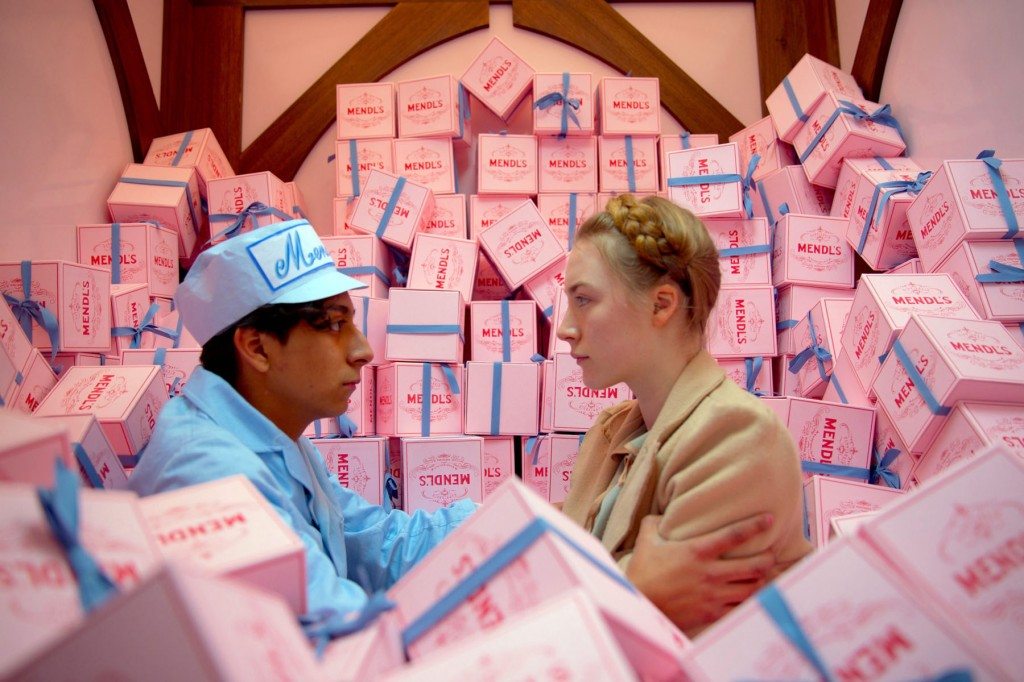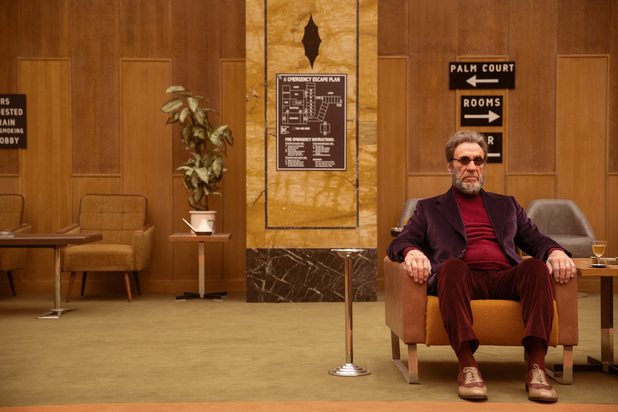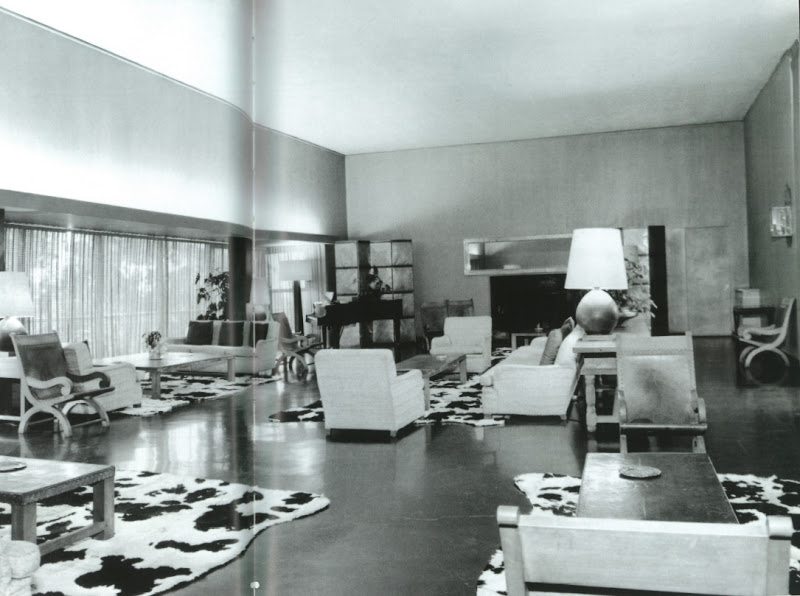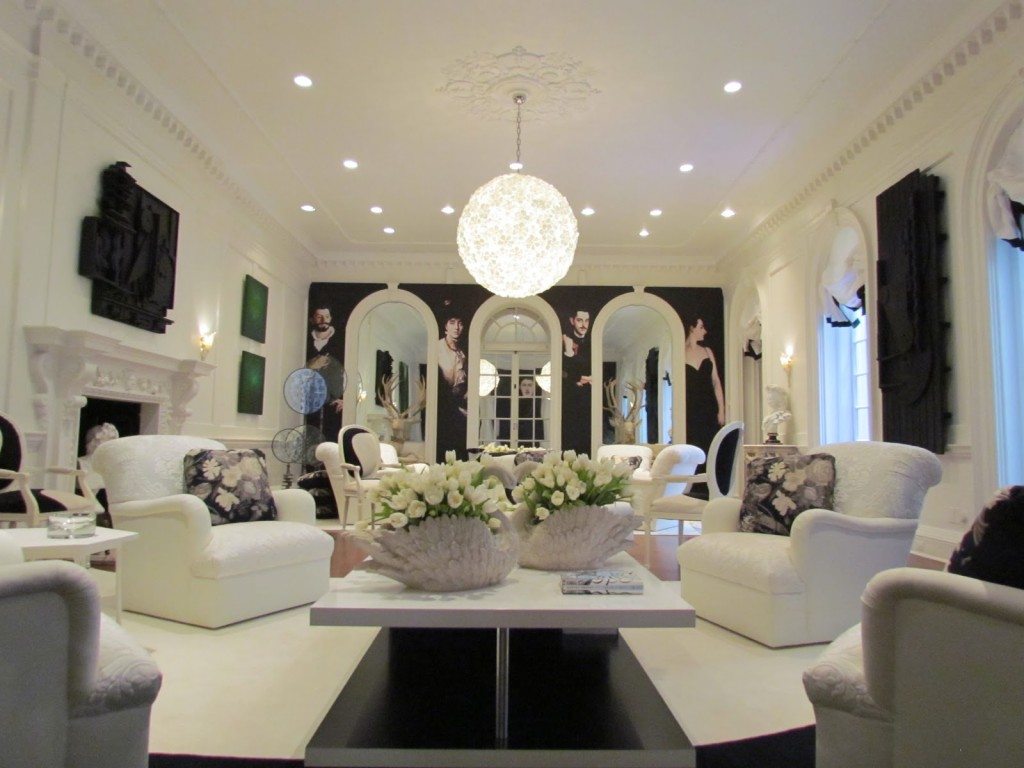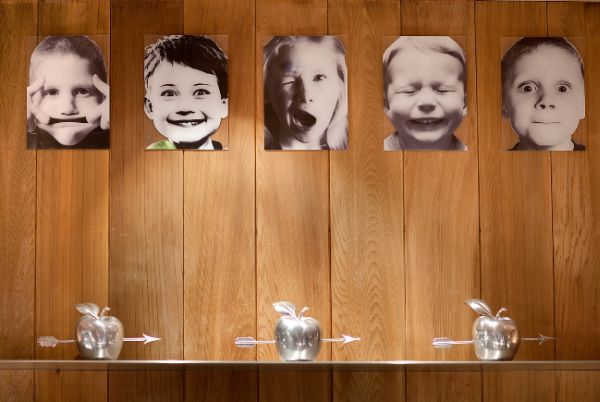What can Wes Anderson teach us about interior design?
Wes Anderson never lets you forget who is telling the story, and nowhere is this truer than in his latest fanciful comedic caper The Grand Budapest. The movie takes place in a hotel, but right from the beginning it’s framed around somebody reading a book that was written by a hotel visitor who heard the actual plot of the move when he visited. So viewing the movie is like reading a book that was written by someone who heard the story from somebody else – got that?
Where Anderson is concerned, the formalism and framing of a narrative is always as important as its contents. It’s as if he is always playfully reminding us: This is a story, and I am the one telling it to you.
The Grand Budapest fits perfectly within the Anderson aesthetic from its opening scene. Every moment is brightly patterned with just a touch of the surreal or the whimsical, and there’s a sharp sense of rhythm to every movement: When a group of people run up the stairs, they are always stepping in time.
It is always a risk to call so much attention to aesthetic. Where interiors are concerned, almost everyone opts for something quieter, less pronounced. And usually this is the right choice. Interior design, at its most basic level, should make us feel comfortable; it shouldn’t demand that we figure it out.
I’m sure everyone can relate to the experience I had last week of stepping into a restaurant that was over-designed: The lighting chandeliers were massive, braided rope contraptions, the wall art was big and brassy, the chairs were mismatched and there were potted trees so tall they were brushing the ceiling. Any one of these elements would have been fun, altogether it screamed, “Hello! I have been designed!”
And to be sure, Anderson has his detractors too. When your aesthetic is as strong as his, inevitably it will divide people. Conversely, few directors enjoy more enthusiastic fans. The people who love Anderson, really love him. If you choose to approach interior design with a strong aesthetic mandate, as Anderson approaches his films, it will be impossible to please everyone, but it might also be possible to create something beautiful and new. Those who aren’t afraid to take risks are always the ones who drive the conversation forward.
Who in the interior design realm compares to Anderson? Well, I think it’s safe to say nobody would actually want to live in a place that looked like the Grand Budapest, but here are just a few fantastic designers, historical and contemporary, who have unmistakable and bold aesthetics:
Francis Elkins was all about futurism, jewel tones and opulence. She was big on combining colors in unexpected ways, and she also knew how to pair vintage pieces with contemporary spaces. The eclectic funks of many of her designs retain their cool even today.
Geoffrey Bradfield Bradfield has his finger on the pulse of contemporary opulence. There is something very special about his bold, spare-no-expense design; I imagine the occupants of his spaces feel a little fancier the moment they step inside a room he put together.
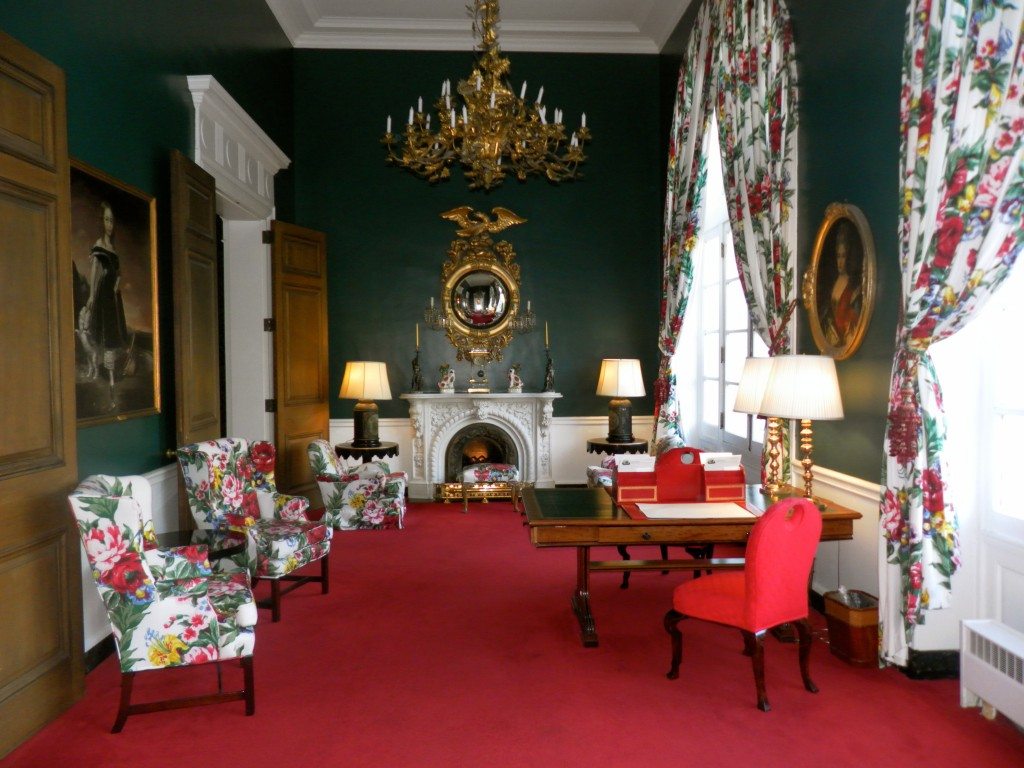
Dorothy Draper If anyone ever knew something about maximal color, it was Dorothy Draper. Dorothy was truly visionary when it came to thinking about the possibilities available beyond tried-and-tested hues. She originated what we now call “modern baroque” and wasn’t shy about treating her work like art. She was always keen to create public spaces that would make the people who visited them feel something different and apart from their normal realm of experience.
Philippe Starck Starck’s work is so inspirational not only because is it fun and magnetic and full of charm, but also there are strong ideas at work behind the playful spaces he creates. Starck believes that high-quality design shouldn’t be exclusively available to big spenders. He’s made a point of producing furniture (he’s also a product designer) that’s manufactured in plastic and retailed widely.
Odds are, you don’t love all of these designers equally, there’s probably one or two you’re more drawn to, and that’s good. It’s important to be definitive about what we like. The one thing all four have in common, however, is they weren’t afraid to draw attention to form. Like Wes Anderson, they were in control of their personal aesthetic and didn’t mind if rooms came out with their signature stamped on them. Obviously, rules were broken along the way.
As for textiles, formalism and calling attention to construction is a trend that’s taken off in recent years. Increasingly, we’re seeing artists experimenting with different fibers and materials that question traditional standards of what constitutes weaving. Elisa Strozyk’s fantastic wooden rugs are an inspiring example of this, and you can browse DLB’s contemporary collection for more non-traditional, strong-aesthetic inspiration.
